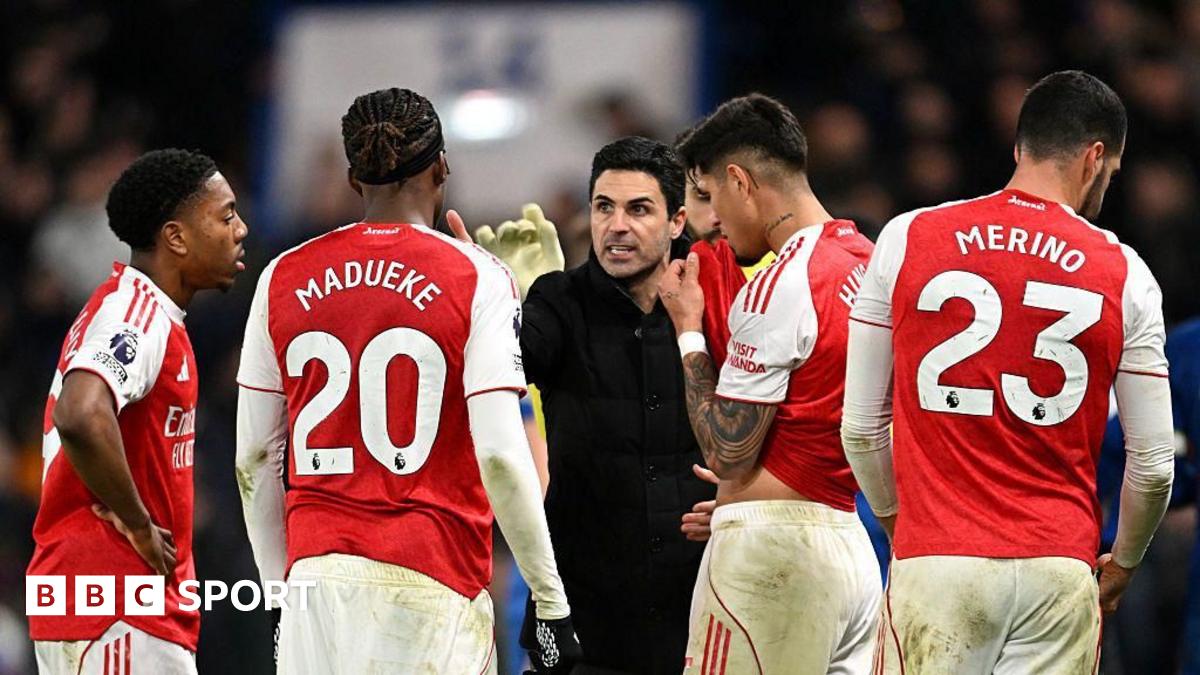Arteta has ‘flavour’ Arsenal could have ended ‘immense’ week with win at Chelsea
Facing Tottenham, Bayern Munich and Chelsea inside a week – a run any side would find an extreme test – and earning two wins and a battling draw cannot be considered anything other than a positive return but Arsenal may be left feeling they could have done even better.
After superb performances in beating rivals Spurs before dispatching Bayern at the Emirates, Sunday’s match with Chelsea was always going to be difficult with recovery time limited.
And preparations were further hit with key centre-back William Saliba ruled out with a knock picked up in training – the France international set for more tests.
Given that context, a 1-1 draw secured through Mikel Merino’s header to leave the Gunners five points clear at the top of the table is far from a poor result. But having seen his side play against 10 men for the majority of the match following Moises Caicedo’s red card, manager Mikel Arteta also admitted an opportunity to extend the lead further had been missed.
“It’s been a big week, starting with the derby,” he said. ” Then to play Bayern Munich three days later [and] we lost players in those games.
“Today, for example, we had to play a partnership [in defence] that we never played before in a really difficult match.
“The captain is still not here (Martin Odegaard), the nine is still not here (Viktor Gyokeres), Kai (Havertz) is still not here, We lost Leo (Trossard) in midweek as well, But the team had to react to that.”
Odegaard and Gyokeres did come off the bench for the Gunners in the second half at Chelsea.
“I think overall it’s been a really positive week because the difficulty was immense,” added Arteta.
“But I have this flavour that today we should have and we could have won the game and we haven’t. That’s a learning point from it.”
